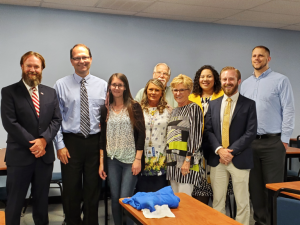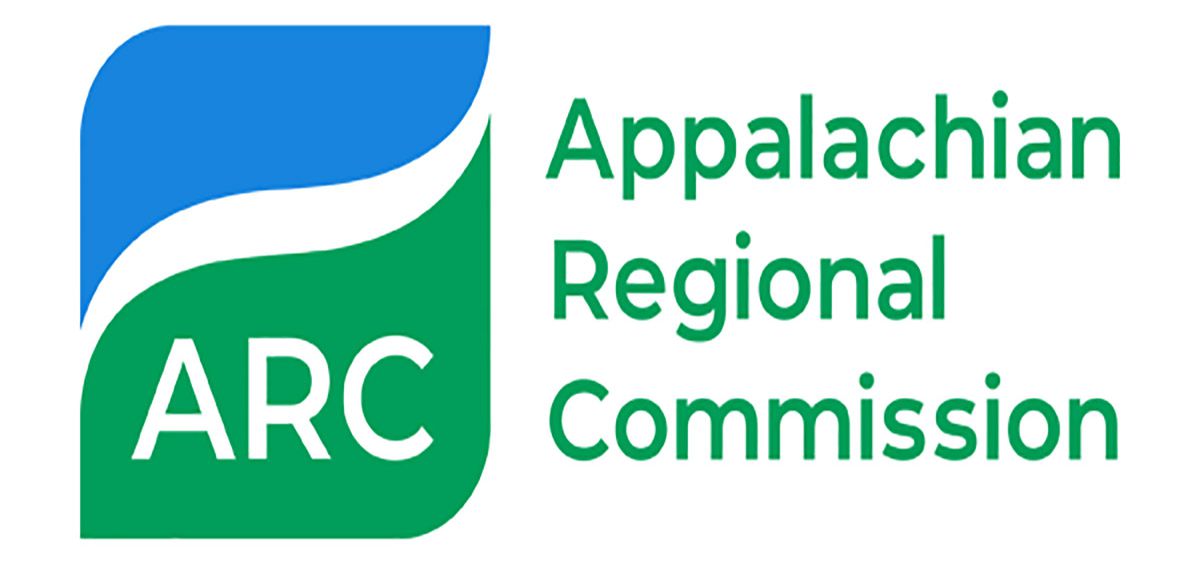Jessica Stapleton was in the thralls of active addiction when she first heard of the Recovery to Work program. She had lost the trust of her family and custody of her six children. She credits the program with not only changing her life, but saving it as well.
“It pretty much saved my life. I was living with my grandma, totally dependent
on my family,” Stapleton, 30, of Ironton, Ohio, said. “I got into this program, I was taught how to stay sober, I was taught working skills – skills to live. I was able to build a support system, and after about a year I was able to move into my own home.”
All across the Ohio Valley, communities are finding ways to help people like Stapleton recover from substance use disorders.
In April, the Appalachian Regional Commission (ARC) awarded more than $9 million to 30 programs across 12 Appalachian states that help guide people in recovery back into the workforce. Of that, the commission dedicated $4 million to projects in Kentucky, Ohio, and West Virginia.
Substance-use disorder is a crippling epidemic for many communities in the region. The National Association of Counties reported that in 2017, the opioid overdose death rate was 72% higher in Appalachian counties than in non-Appalachian counties.
A third of excess deaths between 2010 and 2017 for people aged 25-64 occurred in Kentucky, Ohio, West Virginia and Indiana, many of which were due to drug overdoses, according to the Journal of the American Medical Association.
In addition to severe health risks, people struggling with substance-use disorders often face unemployment or underemployment. This can lead to relapses in recovery, housing inequalities and issues with child custody.
The epidemic affects not only the users but also the families and communities to which they belong. ARC’s latest funding efforts provide a crucial service to these communities, which include some of the most under-served parts of the country.

Working Through Recovery
Jessica Stapleton lives in Lawrence County, Ohio, an area that is facing an accelerating drug epidemic. By June 2021 the number of overdose-related deaths in the county had already matched the previous year’s total of 26.
Stapleton had just given birth and was in the beginning stages of recovery when a peer mentor suggested Ironton-Lawrence County Community Action Organization’s Recovery to Work program.
Stapleton entered the ARC funded program in October 2019. She is now sober and has custody of five of her six children. She works full time at the Lawrence County Health Department as an environmental clerk and contact tracer for COVID-19. Stapleton said she was able to secure her employment thanks to Recovery to Work.
“When I started this program I had no intention of working. I fully thought I could live off of everybody else. But they showed me that that really wasn’t a life worth living,” Stapleton said.
She credits the people in the program for believing in her and picking her back up when she stumbled in her recovery.
“That’s a big part of it, you need that when you are in early recovery. You need people who are on your side and willing to be there when you fall. They didn’t give up on me. I relapsed in this program, I wasn’t always the poster child. Even when I fell, they were there for me, they didn’t judge me. They believed in me,” she said, adding that she believes the program should be all around the state of Ohio.
Not only is Stapleton in a job that she says she “loves”, but she’s also been able to re-establish trust with her family.
The program works to create a social system that encourages sobriety and the advancement of participants’ careers. Participants may go through mental health treatment, drug and alcohol counseling, anger management, parenting classes, job skills training and more.
Signs Of Success
At the end of the first year of the program, Recovery to Work retained about 77% of their participants, a According to a report from Marshall University. After two years, 28 participants received job placement in fields ranging from office work to construction, setting them up on a full-time career path.
Gary Roberts is the director of operations at Family Medical Centers in Ironton, a branch of the Ironton-Lawrence County Community Action Organization (ILCAO).
“There’s nothing more satisfying than seeing someone be successful in a program like this,” Roberts said.
In his role, Roberts oversees Recovery to Work participants who are employed at the Family Medical Centers, interacting directly with people working on recovery.
He explained the program began thanks to a $2 million grant from Purdue Pharma, which is also facing multi-billion dollar lawsuits for its role in enabling the opioid epidemic. In 2019, Purdue Pharma declared bankruptcy and didn’t renew the grant, so ILCAO began to look for a way to continue the program.
A grant of $500,000 from the Appalachian Regional Commission allowed the program to move forward.
“The purpose of getting this ARC grant was to continue this program…it works,” he said.
ARC has also funded other programs in the area, including the Southern Ohio Employer Resource Network (SOERN) which serves Jackson, Ross, Vinton, Gaillia, Lawrence, Pike and Scioto counties in Ohio.
SOERN works to grow collaboration between employers and community service providers, as a means of encouraging successful employment for those in recovery. They provide a wide range of services including Success Coaches, access to substance-use disorder treatment, peer support, mental/physical healthcare, transportation, housing, childcare, financial management, education, and training.
Representatives from ARC recently visited Bellisio Foods, a frozen food manufacturer and partner of SOERN in Jackson, Ohio, to see how the funding is being used.
Although primarily focused on people with substance-use disorder, many of both SOERN and Recovery to Work’s participants have been incarcerated, often for drug-related crimes. More than 44% of participants enter the Recovery to Work program with legal trouble, rendering them at greater risk for underemployment, according to the Marshall University report.
ARC Federal Co-Chair Gayle Manchin spoke about the importance of recovery work programs while touring Bellisio Foods, particularly for those who have been incarcerated.
“[A] lot of times, employers are hesitant. That’s one of the drawbacks that people talk about in recovery, it’s so difficult to find a job because of that criminal record,” Manchin said.
However, individuals who have been incarcerated or are in recovery may find that is not always the case. Julie Bolen, the executive director of Ross County Community Action said the job market is in the program participants’ favor.
“This is a great time to be introducing programs like this because there is such a need for employers to hire employees, so we have found that employers are being much more flexible on background checks right now,” Bolen said.
Stapleton believes that the stigma of drug use or incarceration often follows people long after they’ve been sober.
“People don’t want to take a chance on them, and this program gives them an opportunity to do that and for us to prove ourselves,” Stapleton said. “You never know what kind of person someone is until you give them that chance to show you. We’re totally different (in recovery). I would never do the same things now that I did in addiction – we aren’t the same people.”
For Stapleton and others dealing with substance-use disorder, these programs provide hope that there might be a better future.
“I never thought that I’d be here,” she said. “If you’d have asked me two years ago where I’d be now, I’d probably say prison or dead.”
In the Ohio Valley, 11 programs received funding from ARC:
Kentucky
Bridges to Work – $500,000
INSPIRE Clay County – $50,000
Ohio
Recovery Ecosystem Expansion Initiative – $500,000
Treatment Recovery and Workforce Support Program – $500,000
Southern Ohio Employer Resource Network – $500,000
Recovery Through Employment in Ohio’s Appalachian Industrial Belt – $45,309
West Virginia
Building the Mid-Ohio Valley Recovery-to-Work Ecosystem Through Expanded Services and Support – $500,000
An Interagency Movement of Homeless Individuals in Recovery to Employment (AimHire) – $500,000
West Virginia Inspiring Hope – $499,176
ReIntegr8—Social Enterprise Expansion – $494,652
Heart of WV Recovery Ecosystem – $25,000


